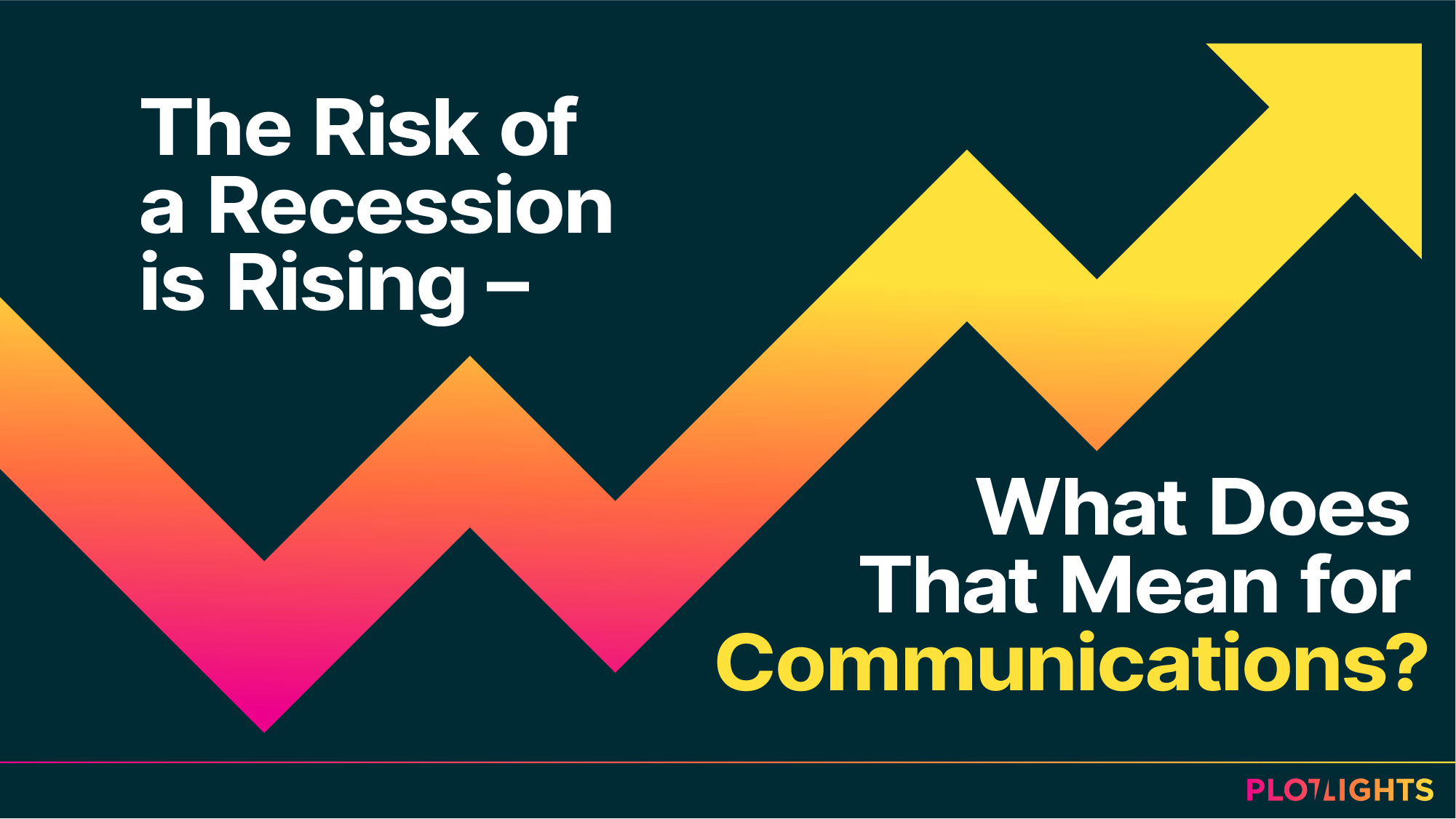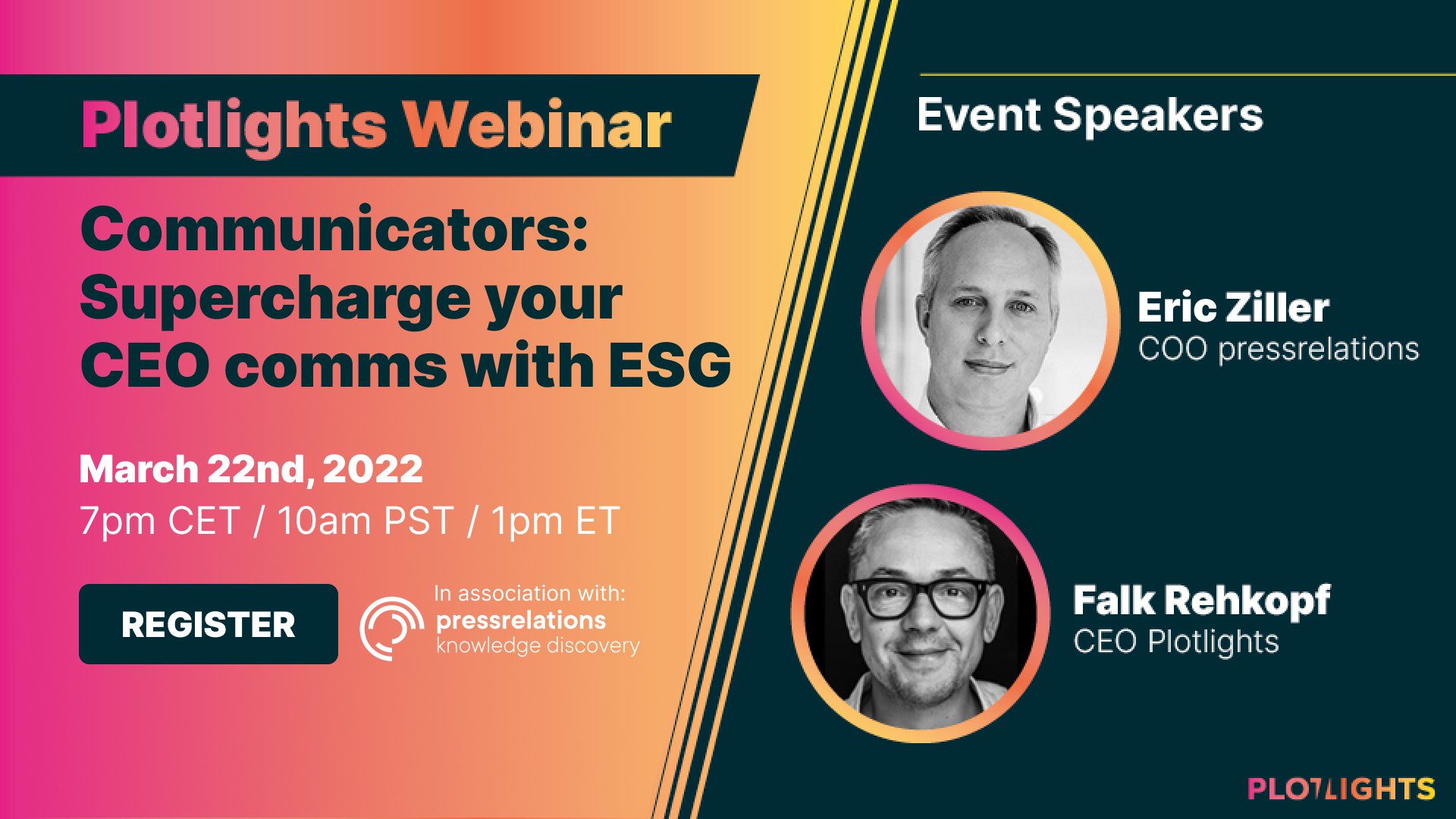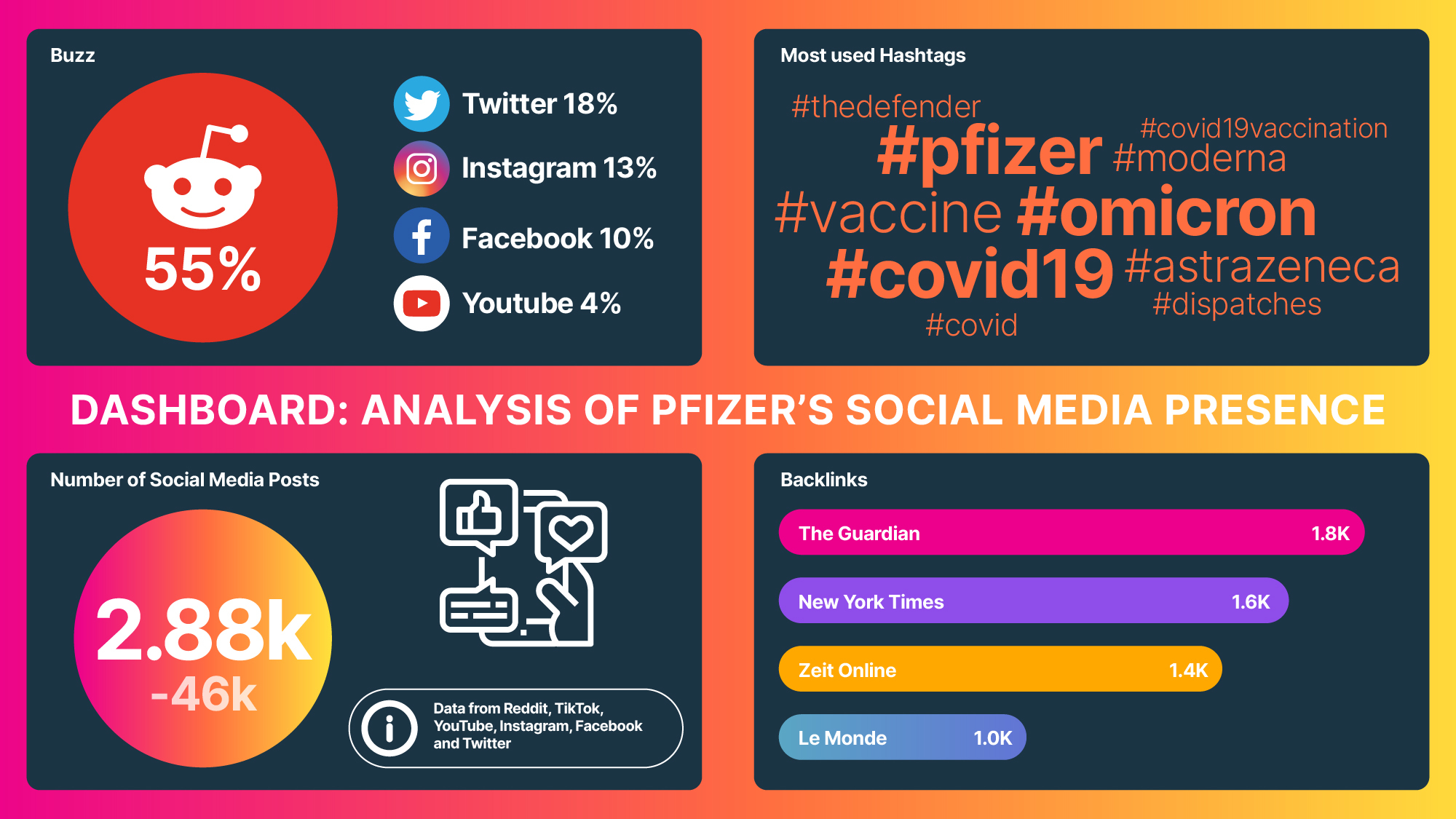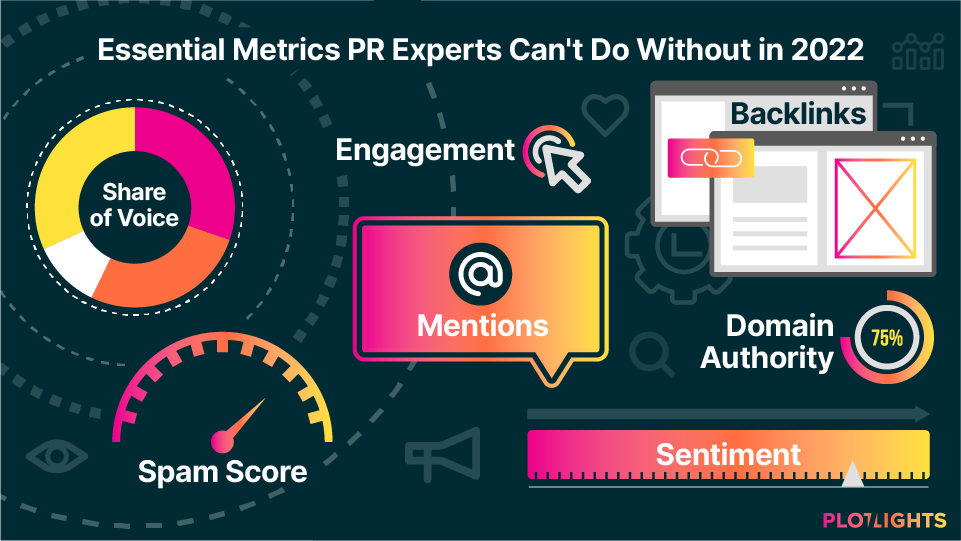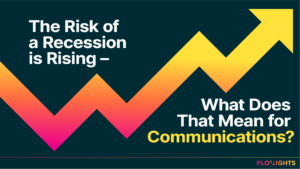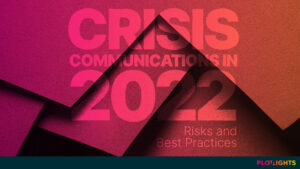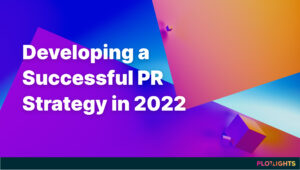In an increasingly complex digital environment, PR and corporate communication teams need data and insights at every step of their workflows – from research and planning to execution, analysis, and optimization.
For one, more data is needed because disinformation is a growing problem for brands. Consider disinformative websites, they often have high domain authority and low spam scores making them look like attractive media partners. That’s why modern communication teams work with trust rating data to inform and protect brands and also to avoid cross-financing disinformation through ads.
In addition, cybersecurity attacks have never been more prevalent than they are today. To help prevent, respond to, and recover from attacks, communicators are forced to integrate threat intelligence tools and data into all aspects of their work.
Last but not least, completely new data points have become critical in helping quantify the value and business impact of PR.
With that in mind, in 2022, we consider these metrics essential for any PR and communication teams:
Share of Voice
Share of Voice, or SOV, determines the market share your brand owns in relation to your competition. One way to calculate SOV is to take the number of mentions around your brand, product, or CEO and divide it by the total number of mentions within your industry or topic. SOV as a metric helps to determine the visibility of your brand and can be interpreted as an authority metric i.e. the higher your SOV, the greater your brand’s authority within your space.
Share of Search
Share of Voice is very helpful but also limited as this metric only measures visible conversations. We argue that communicators should start measuring brand awareness much earlier in the funnel – this is where Share of Search (SOS) comes into play. SOS data uncovers intent from search behavior: In a nutshell, SOS is the volume of organic search queries a brand receives as a proportion of the total number of searches made for every brand in its industry.
SOS is based on the same principle as sales and market share but uses the number of times a brand’s name is typed into search engines. This metric is a great indicator of the momentum your brand enjoys and may help to predict future SOV as well as how much interest your paid media efforts are generating.
Mentions (Including Those From the Dark Web)
With Plotlights communication teams catch any mentions of their brands, products, or executives anywhere i.e. within the surface web as we all know it, think websites and social media, but also within the broadcast or print content and even the Dark Web. To manage and protect their brands, communication and marketing teams need to get the full picture and include Dark Web forums and channels next to instant messaging and digital distribution platforms such as Discord, Telegram, Signal, and hitherto underrated social networks such as Reddit.
 Snapshot of the distribution of Dark Web mentions across channels & networks
Snapshot of the distribution of Dark Web mentions across channels & networks
Content Danger Score
Dark Web content can be difficult to understand as it is often highly technical data or written in Mandarin or Russian. Our Content Danger Score (CDS) analyzes every mention in an automated fashion and assigns a score to every single piece of Dark Web content. The CDS indicates how likely it is that content may be used for criminal activity. This way, communicators can easily and quickly understand and assess risks and threats.
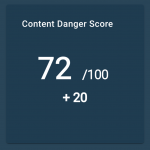
Consider the visual to the left. The Content Danger Score of 72 refers to this organization’s current footprint within the Dark Web. There was a notable increase in the risk by 20 points in the period under observation. Content Danger Scores of 50+ are associated with a higher risk and further action is probably required.
Media Reach
The reach is the total number of people who saw your content. Reach is an essential metric in every PR effort as it helps to understand how your content is performing with your target publics in media outlets and also to establish the value of specific outlets for your brand, thus optimizing media spending.
Impressions
Impressions are the number of times your content was displayed regardless of whether it was clicked or not. Impressions are a great diagnostic metric but need an additional dimension of observation as low-quality impressions typically don’t result in positive, measurable business outcomes.
Traffic & Conversion Data
Website traffic is an essential macro indicator to measure PR business impact. The more traffic communication teams create, the more potential influence, brand value, and possible future customers they help to generate. Traffic data can be made up of the number of visitors to any of your digital destinations (website, newsroom, blog, or else), visitors’ behavioral patterns (including techno- and sociodemographic data) when interacting with your brand online, their device preference and many other data points.
While traffic data is helpful to understanding target audiences and optimizing campaign strategies, conversions represent a core metric specifically when it comes to demonstrating PR’s value to the board. Relevant metrics range from conversions from advertising campaigns, landing pages, email conversions as well as from activities on social media.
Domain Authority
Domain Authority is a search engine ranking score that describes a website’s relevance for a specific subject area or industry. The higher the score of your website, the higher your relevance, and authority within your space. This metric helps to determine your content’s positioning within the search results landscape and to understand why certain content performs, in SEO terms, better than others.
Your authority data should also include Page Authority data. This score indicates how well specific pages will rank on search engine result pages. Page Authority scores range from 1 to 100, with higher scores hinting at an improved search performance.
Spam Score
Another helpful metric comes from SEO specialist firm MOZ and is called Spam Score. Spam Scores are based on the company’s machine learning model and a score of 1%-30% is considered low whereas a score of 61%-100% is considered high. Such spam scores are not an absolute confirmation i.e. higher scores are typically associated with websites that show spammy behavior. Therefore, communicators should not see higher scores as proof but as a call to action to investigate the quality and relevance of the respective websites.
Trustworthiness Ratings
As we said earlier, disinformation is a growing problem for brands, and communicators are well-advised to stay clear of disinformative websites. Studies show that communication effectiveness is higher when working with trustworthy websites as media partners. Also, brands avoid cross-financing disinformation through paid ads making the problem worse.
Plotlights partners with online trust rating organization NewsGuard to add a crucial protection layer to brands’ communication strategies. The trustworthiness ratings allow communicators to identify trustworthy media sources and are fundamental when it comes to safeguarding brands in ad campaigns or media partnerships
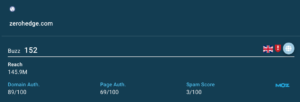
Above you can see an example of a website listing – where NewsGuard recommends proceeding with caution – within the Plotlights platform detailing different data points, from reach, country of origin, various MOZ scores, and the number of articles published on a certain topic.
Below you can see Pfizer’s global media coverage split by coverage within trustworthy versus not-trustworthy media sources.
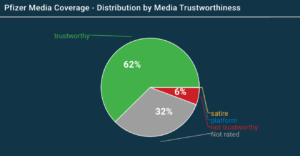
Sentiment Analysis
Sentiment as a metric quantifies a positive, neutral, or negative perception of a brand, product, or company. This metric enables PR professionals to understand the outcome of their activities, both, with regards to single campaigns and on the overall brand perception as well as competitive positioning. Sentiment analysis is also a core crisis metric as it helps to quickly assess how target audiences respond to specific communication activities, thus enabling timely adjustments.
Social Media Engagement
Social media engagement measures how people interact with your social media accounts by looking at a variety of micrometrics such as likes, shares, comments, saves, clicks, and mentions. Social media engagement is a valuable indicator of how your content resonates with your target publics. Maintaining higher engagement rates may help your brand to grow more reach and conversions.
Backlinks & Referrals Traffic
Backlinks form a key ingredient of any PR strategy as these are one of the most effective ways to increase a site’s ranking on Google – but, also, one of the most difficult. From a definition perspective, when one website links to another a backlink is created. A great way to measure campaign success is to showcase the number of backlinks you have secured.
It’s a bonus if you add a qualitative dimension to your backlinks such as the Domain Authority to review the relevance and authority of linked content and sources.
Keywords Rankings
Keyword rankings refer to your content and web pages’ position within search results for specific keyword search queries. Generally, ranking on search engines will deliver organic traffic to your website and the keywords you choose to target will determine what kind of traffic you get. This metric also helps to understand how authoritative your content and brand technically are.
Reputation Risk Index
The Plotlights Reputation Risk Index helps to measure a brand or an organization based purely on Dark Web intelligence. Higher scores may correlate to a heightened risk profile and communicators should track scores continually as changes can indicate progress in improving a security status, or alert to the presence of risks such as data leaks.
The Reputation Risk Index works on two dimensions:
Organization level: The Reputation Risk Index is a cyber risk scoring system where increasing scores correlate to a heightened risk for your brand coming from the Dark Web. This index is also a great benchmarking tool for rating organizations based on the extent and severity of their respective Dark Web exposure. Fluctuations in scores over time indicate progress in improving your organization’s cyber resilience or alert about possible risks to your brand and reputation.
Industry level: Plotlights is currently developing Reputation Risk Indices for all major industries. Results highlight the comparative risk levels of industries but will also help individual organizations and communication teams to benchmark themselves against their respective industry or competitors.
_______________________
Experience first-hand how the first fully-integrated Media Intelligence and Threat Intelligence platform can build and protect your brand. Reach out to us today!

